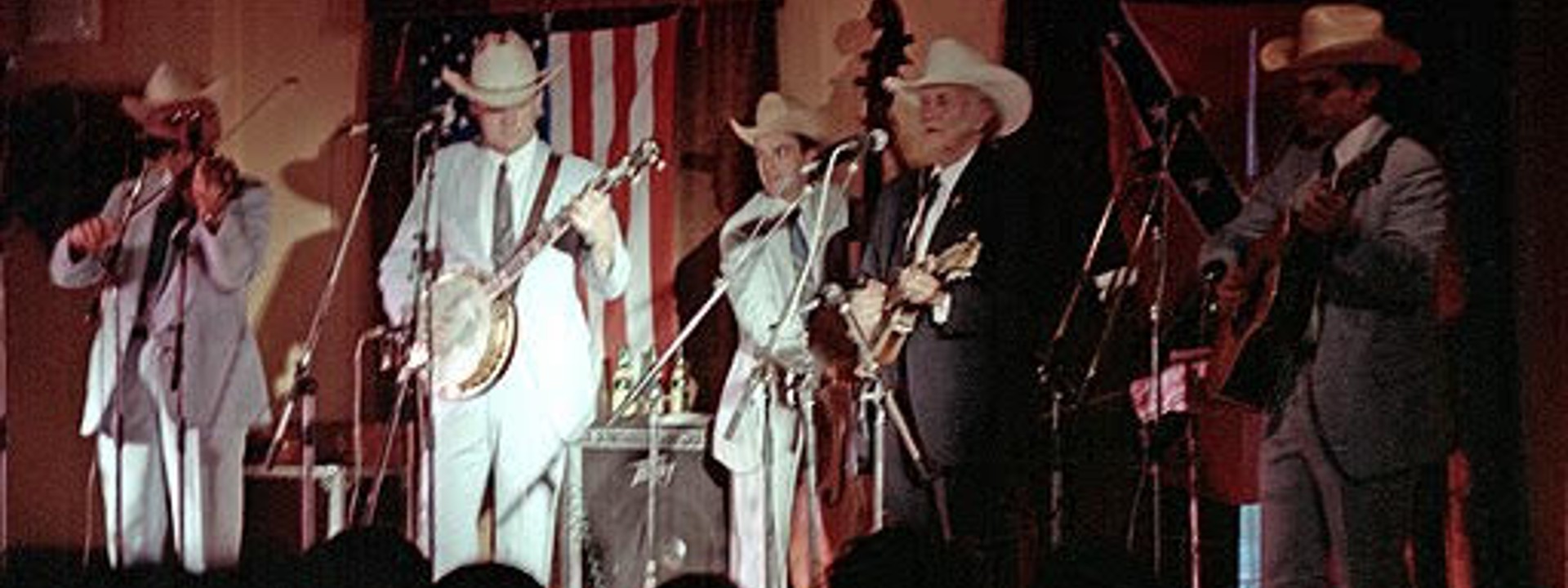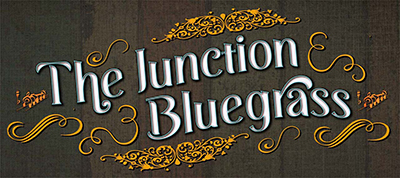Bluegrass Music
WHERE DID IT BEGIN?
It’s true that Bluegrass Music can be credited to one man – Bill Monroe. He developed the now traditional line up of instruments In the early 1940'S and it a was because it was a different sound to anything heard before it, it was termed Bluegrass after his band “Bill Monroe and his Blue Grass Boys”. He was from Kentucky which is also known as the Bluegrass state hence their name.
WHAT IS BLUEGRASS & WHAT ARE THE INSTRUMENTS?
But prior to Monroe the elements of Bluegrass and Old Time (and earlier music form of string band music), where already there.
Many immigrants came to America from the years 1600 and 1700s onwards from the British Isles (England, Scotland, Ireland and Wales) as well as Western Europe. They brought their Celtic music with them to the Appalachia region of the USA, and this was usually was played on the fiddle. People were poor in the main but the getting together in families of friends meant music and it was quite common for people to be able to play the fiddle. The old tunes where just as popular here as in the Old Country. This was their folk music. The music was played and people danced. Larger groups required a bigger music sound and musicians joined up. The fiddle was the main instrument for many years and still today we call Bluegrass Instrumental tunes `Fiddle Tunes` regardless of the instruments being played.
Black slaves brought their own music styles from Africa and the banjo. These were crude instruments at first but caught the attention of musicians and the instrument was developed to the 5 string version we have today. The instrument caught on as people moved north from the southern states and the old tunes got a new lease of life. The banjo soon found it’s way into dance halls and homes. It is the most iconic instrument for the Old Time and Hillbilly music.
Similar to the music, the old songs also made their way from the Old Countries. Usually songs of love and loss, longing for home, struggle, betrayal, heartbreak, revenge and especially what’s now known as the Murder Ballad. Pretty Poly is still sung today but can trace it’s origins back hundreds of years to Plymouth in England. Life was hard in the Appalachians and newer songs reflected those conditions.
The traditional Appalachian string bands became very popular in Kentucky, Virginia, North & South Carolina, Tennessee and Georgia. As time moved forward the bands consisted of Fiddles, Banjos and Guitar. There are other Appalachian instruments but they don’t lend themselves to group playing on the whole.
NOTABLE EARLY MUSICIANS
THE CARTER FAMILY
In the 1920 the Carter family played a pivotal role in the development of country music in general and later Bluegrass music as well. AP Carter collected songs from the Appalachian region and with the rest of the family he rearranged songs to suit 3-part harmonies as reflected in the gospel style of singing. Maybelle Carter is credited with introducing the Carter style of playing on the guitar. Instead of complete strums she picked a bass note and then strummed. This later also became known as boom chick. The singing was prominent and they became very famous indeed recording albums and becoming one of America’s first Country groups.
BILL MONROE (The Father of Bluegrass)
William Smith Monroe was born on the 13th of September 1911 in Rosine, Kentucky. He grew up on a farm and was influenced by the Old Time String Bands and church music. His mother and his uncle played the fiddle. He was given a mandolin when he was young and he set about learning how to play to a high standard. As he grew up he was influenced by his Uncle Pen and the local Black musicians of his day. He played music with his brothers especially Charlie and they went on to form a working duo with him in 1934. They played on tour and again he was influenced by the different styles and methods of playing the old tunes. Charlie and Bill recorded many tunes, some of which are now Bluegrass standards. The brothers went their separate ways in 1938 and both formed new groups.
Bill experimented with instruments and different musicians. He introduced the Double Bass which was not used at that time in Old Time String Bands. He started to sing in a higher register and made the Mandolin more prominent. His band was called Bill Monroe and The Blue Grass Boys. In 1945 Lester Flatt joined the group as vocalist and guitar. He told Bill to hire the now legendary Banjo picker Earl Scruggs. His style of playing was worlds away from the Old Time String Band style. He played a banjo with a resonator attached and picks on his finger allowing him to use rolls of plucked individual strings opposed to strumming. He was fast and was hired straight away. This was a very new additional sound to complement the Blue Grass Boys. The result when played on stage to an audience was immediate and overwhelmingly responsive. 1947 was the real birth of Bluegrass music with the classic line up of Bass, Fiddle, Mandolin, Guitar and Banjo.
As word spread and people heard this sound on the radio it became very popular. So now the Boys could play lightening fast versions of old favourites, harmony vocals in the style of gospel music and new music written by the band members. To differentiate between other forms of folk music, country music and old time music the term Bluegrass was used and stuck. Other Appalachian musicians used the formula to create their own bands and the genre was cemented in American culture.
DEVELOPMENT OF BLUEGRASS
The development of Bluegrass since then has been immense and international. New bands forming, better recording systems, musicians developing new techniques, new songs and new tunes.
The one special development peculiar to Bluegrass music was the response of fans wanting to play themselves. They took the standard line up, and including the Resonator Guitar (Dobro), and they learned the songs and tunes made famous by various bands. They didn’t want to just listen to the music they wanted to make it themselves and develop it as well.
NOTABLE MUSICIANS
The first age of Bluegrass featured Bill Monroe and the Blue Grass Boys, The Stanley Brothers, Flatt & Scrugs, Jimmy Martin to name a few. The second age in the 60’s -70’s were The Seldom Scene, JD Crowe and the New South, Doc Watson, The Nitty Gritty Dirt Band, The Johnson Mountain Bays and The Country Gazette. There are plenty more. This era saw musicians developing their instruments to greater heights such as Tony Rice and Doc Watson on Guitar. JD Crowe and Bill Keith on Banjo. Sam Bush. Ricky Skaggs and Doyle Lawson on Mandolin. Mark O’Connor and Vassar Clements on Fiddle. Todd Phillips and Mark Schatz on Bass. Jerry Douglas and Mike Auldridge on Dobro.
These artists and groups set the standard for others to follow up to present day and the skill level has heightened to amazing levels of musicianship with far too many to mention but all who call on the originator of the craft Bill Monroe.
BLUEGRASS TODAY
Bluegrass allows and encourages musicians to develop breaks and improvisations, it welcomes different arrangements of songs and tunes. It takes the old, tips it’s hat and adds twists and musical turns. It is now influenced by all other music forms from Pop music to Jazz but because it sticks with the original acoustic instruments played in that set style it will always be Bluegrass.
Bluegrass Festivals are remarkable events in their own right. Usually over a weekend and arranged in summer months to allow for camping and outdoor activities. They draw together Bluegrass fans of all levels and abilities to get together and hear and play Bluegrass music. Jam sessions can start up anywhere and last many hours. Over the years certain popular songs and tunes have stuck with the fans and these can be heard at festivals. People who previously had never met, or possibly unable to speak the same language, can group together in a jam and play these standard songs and tunes making Bluegrass music a very social activity. This aspect has also helped to promote Bluegrass music to a wider audience.
Tony Cooney

